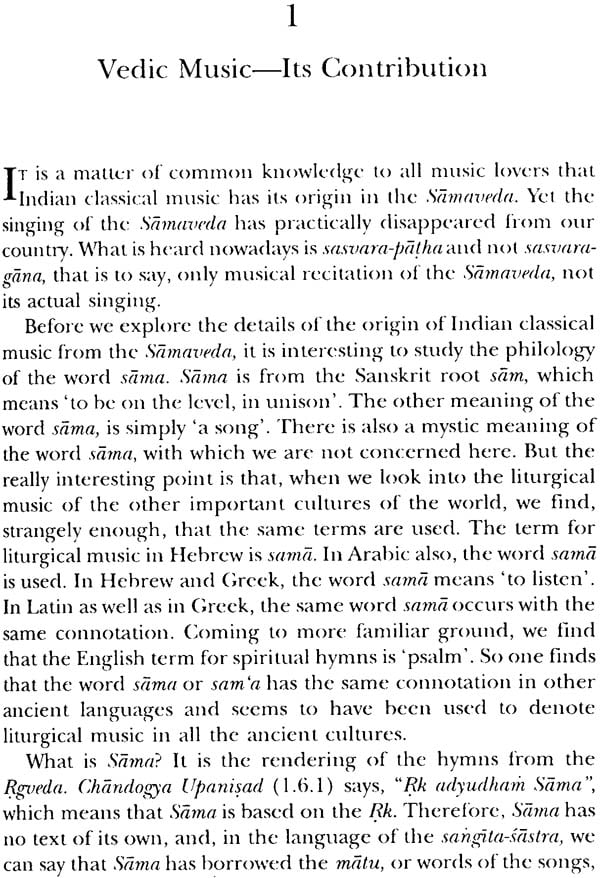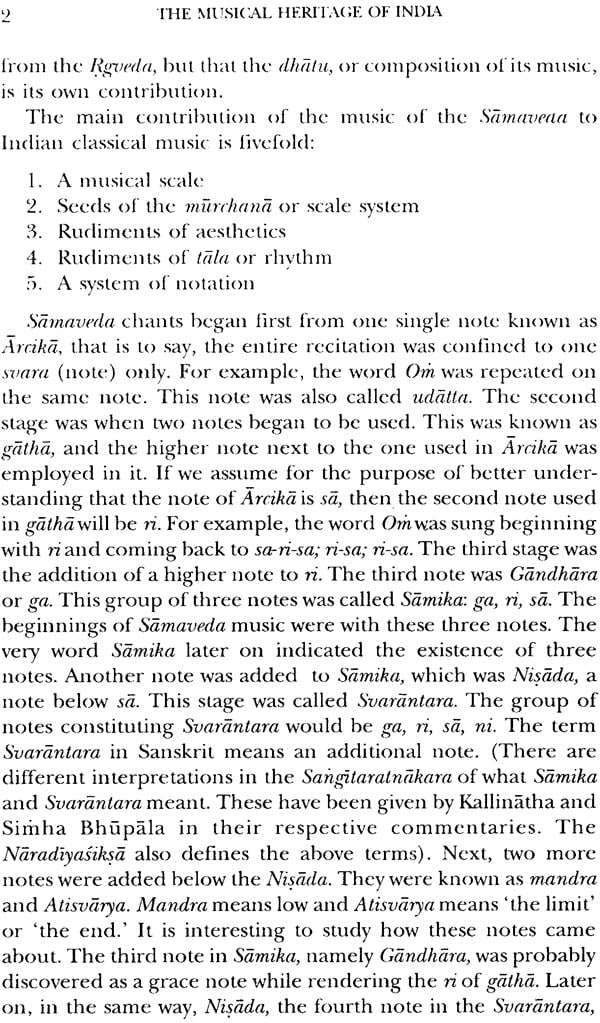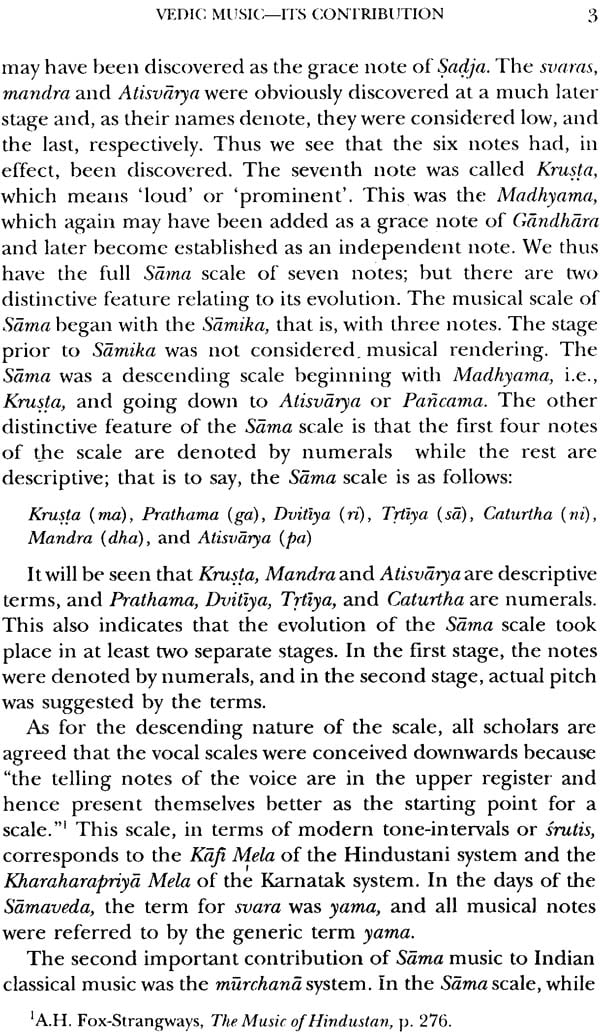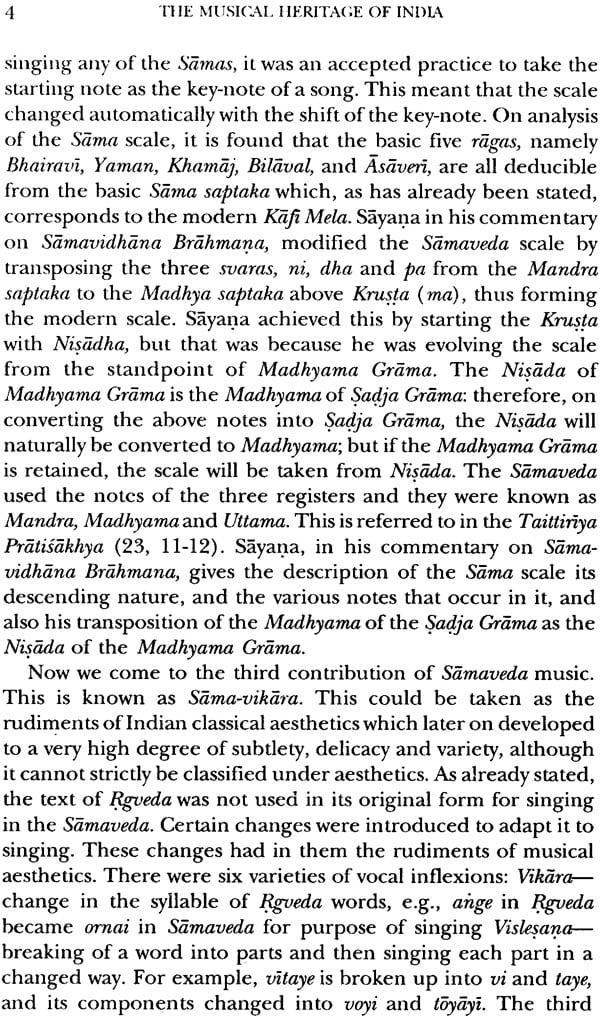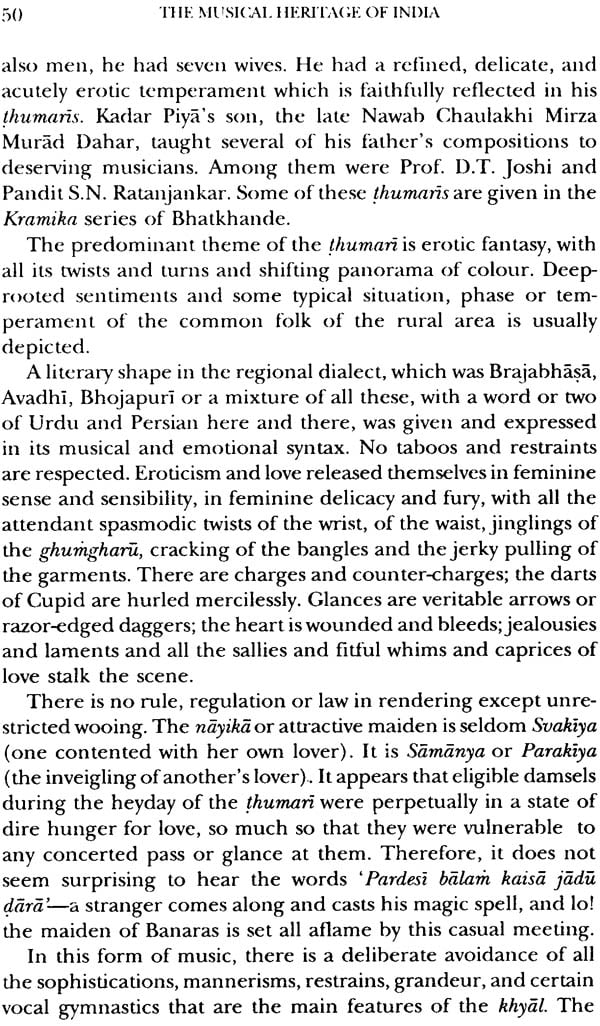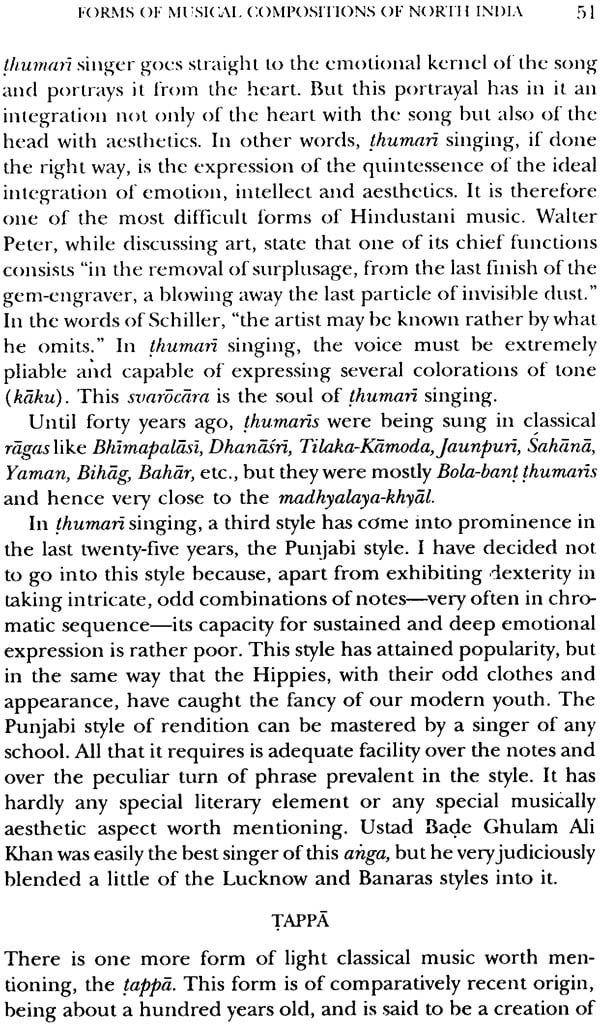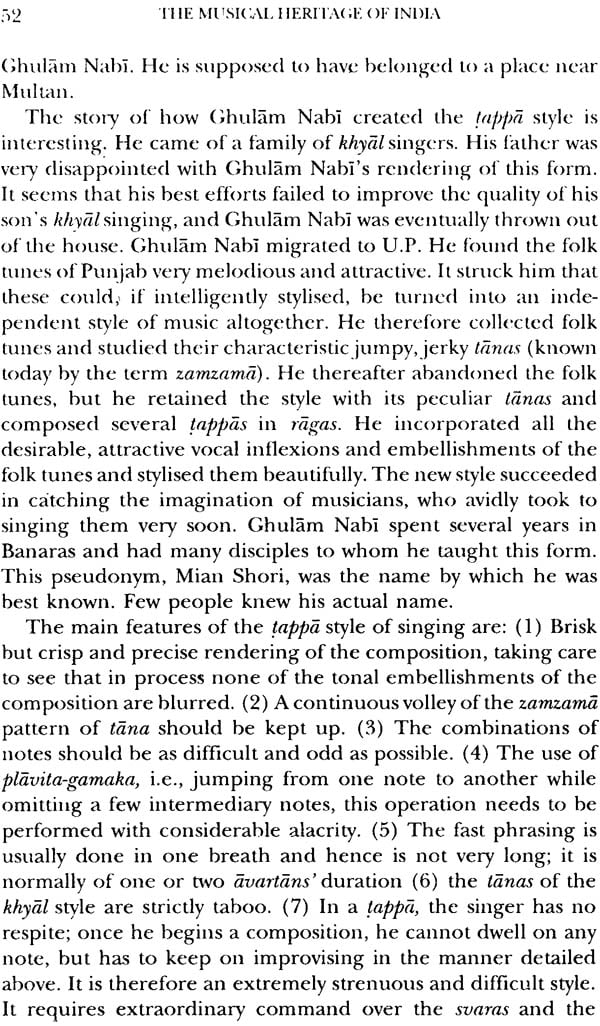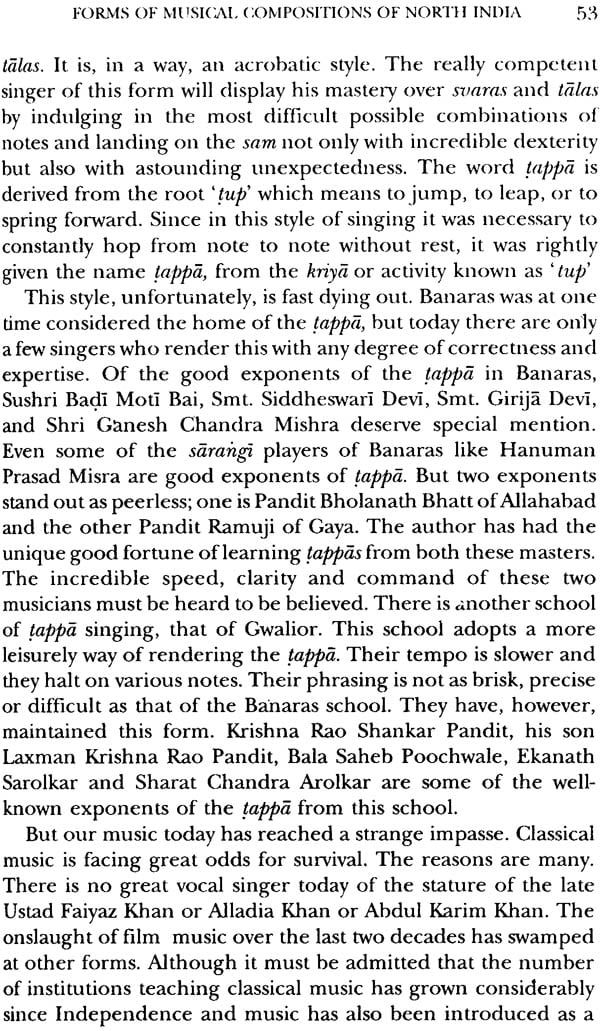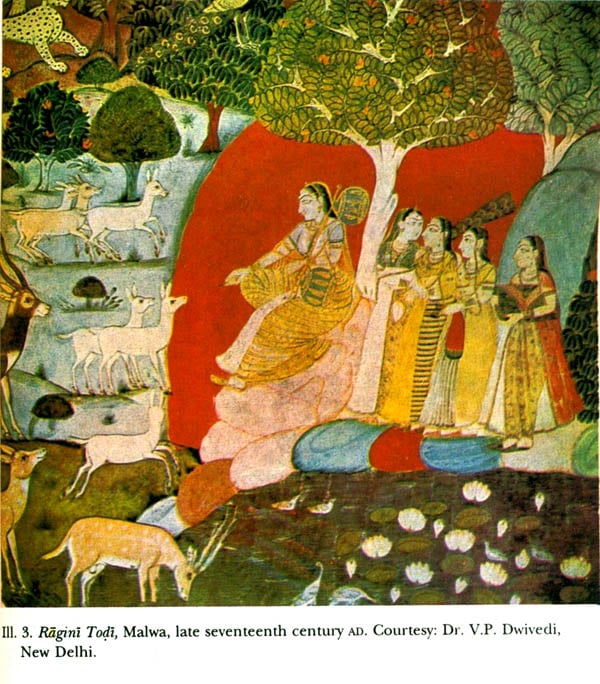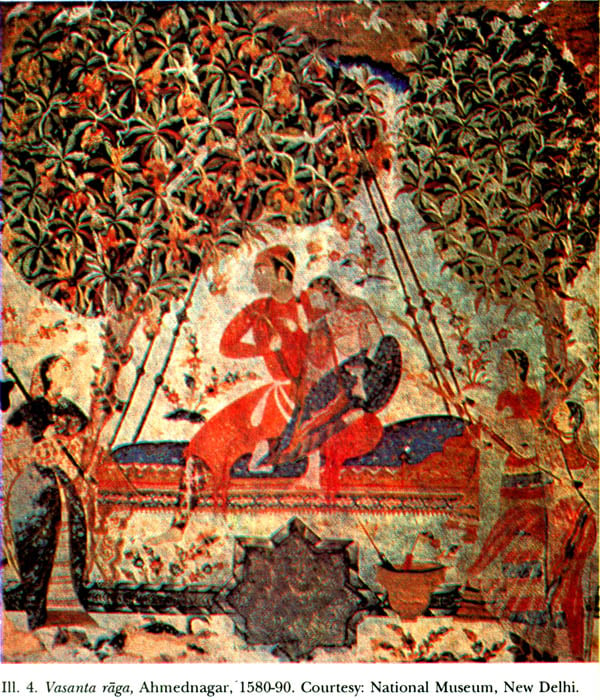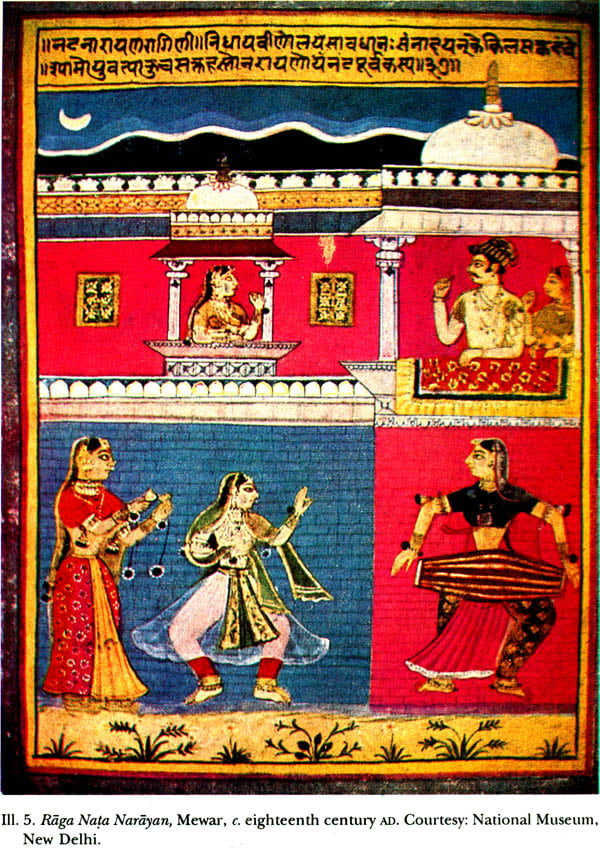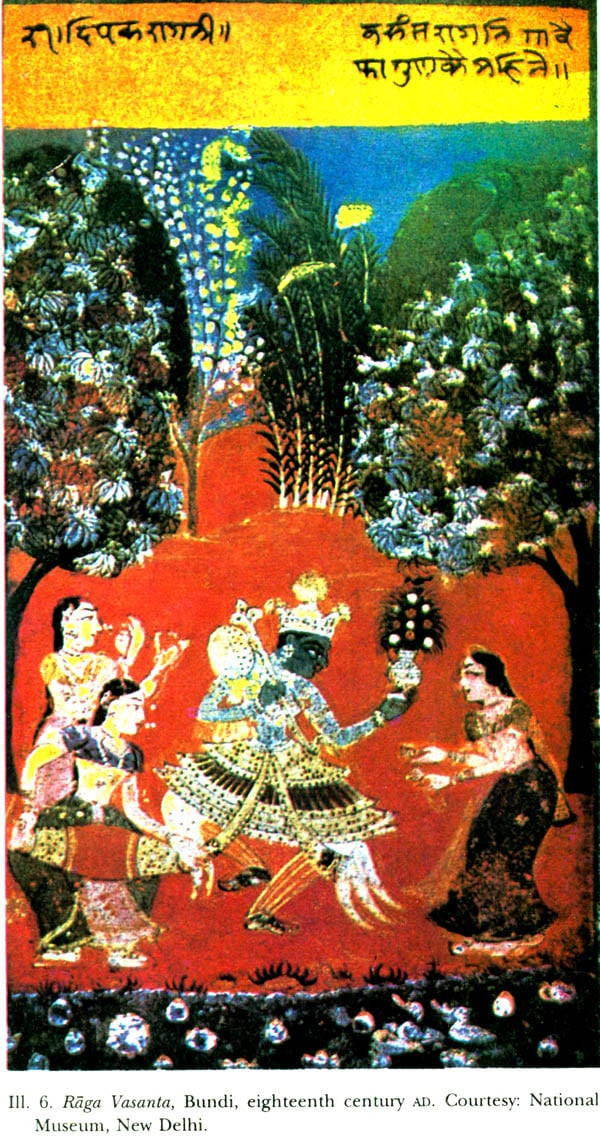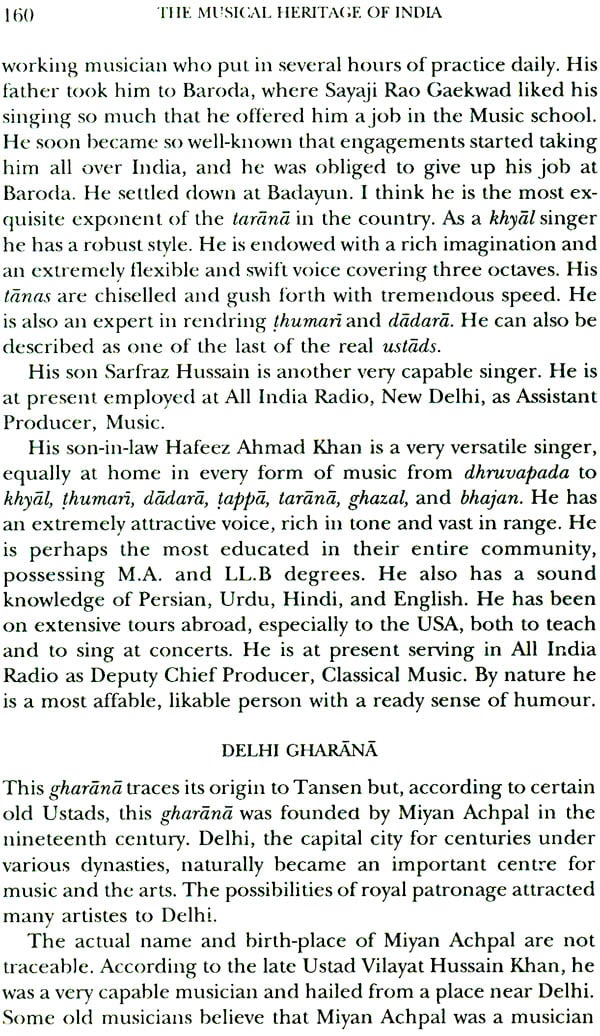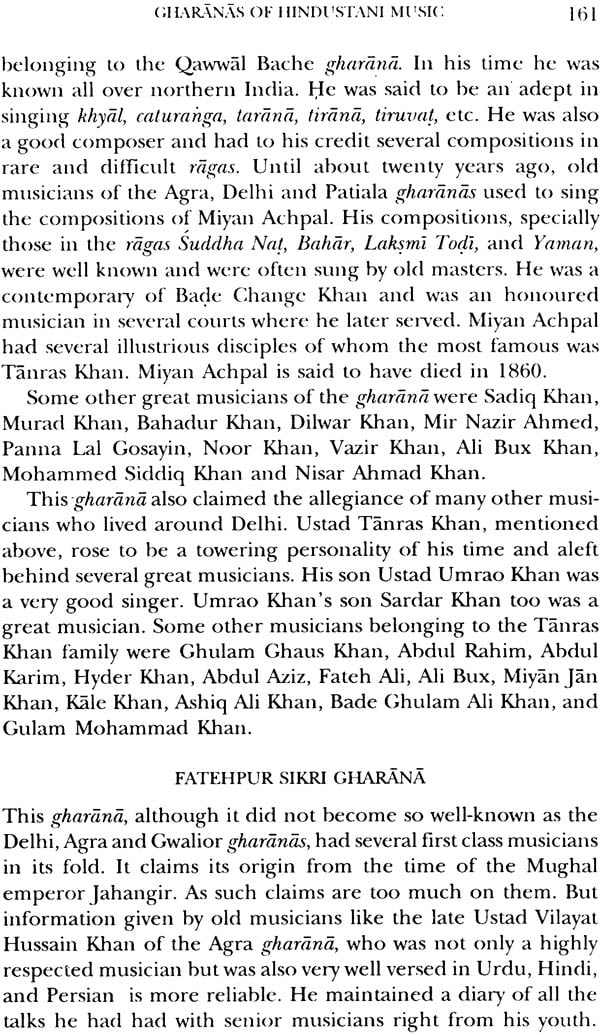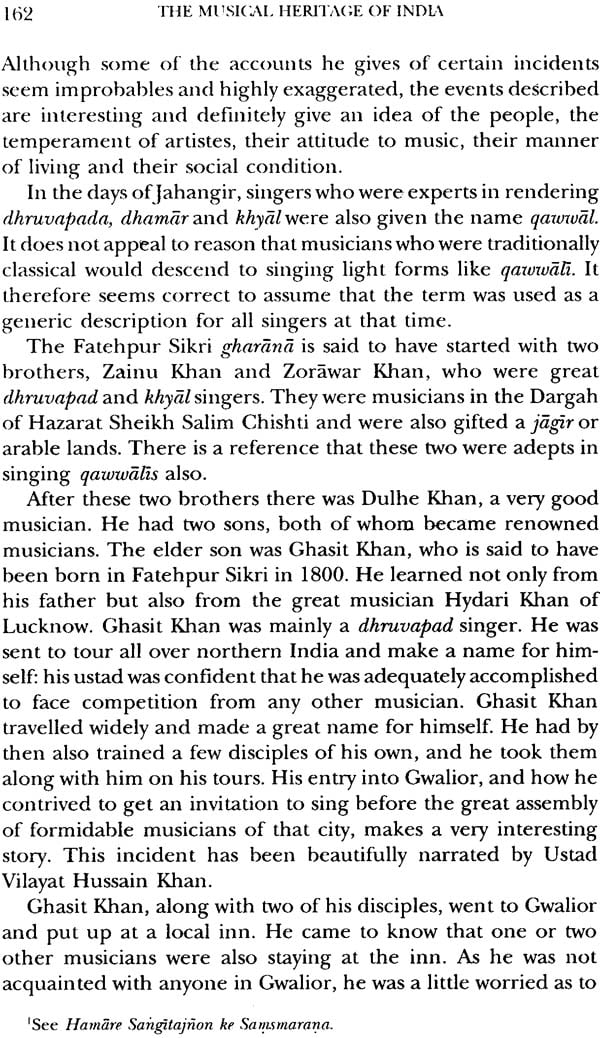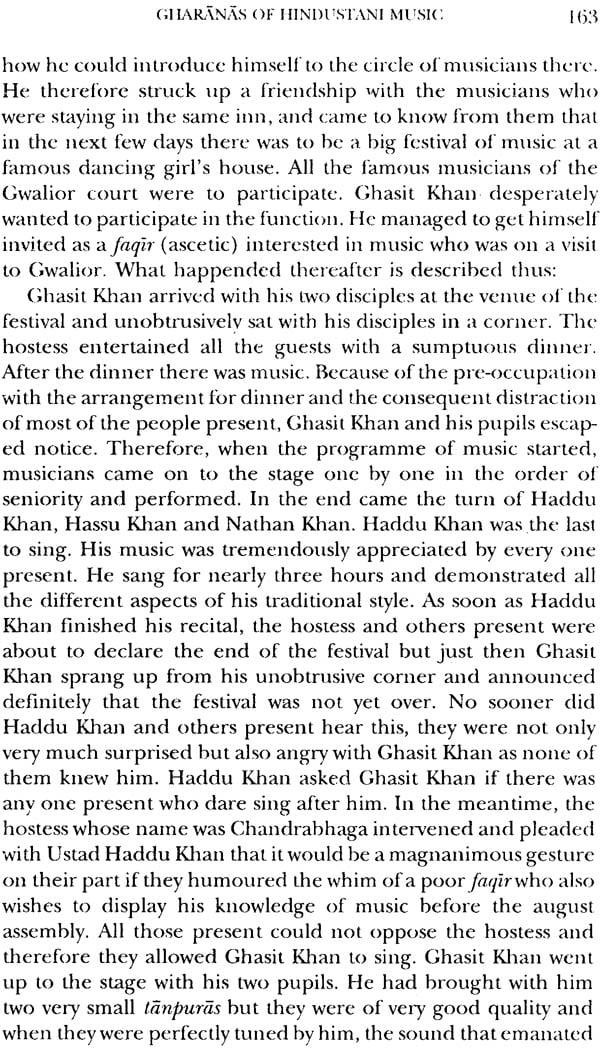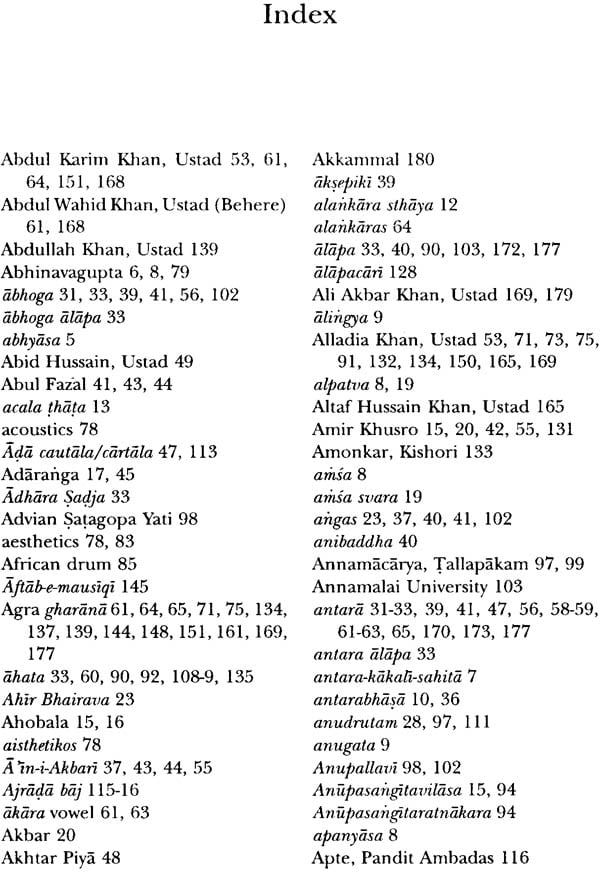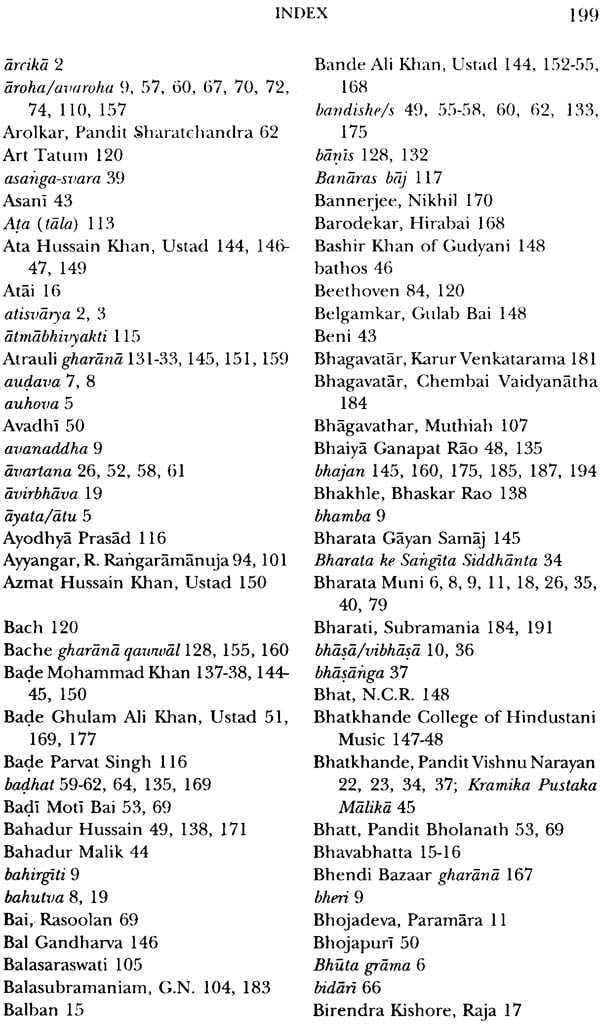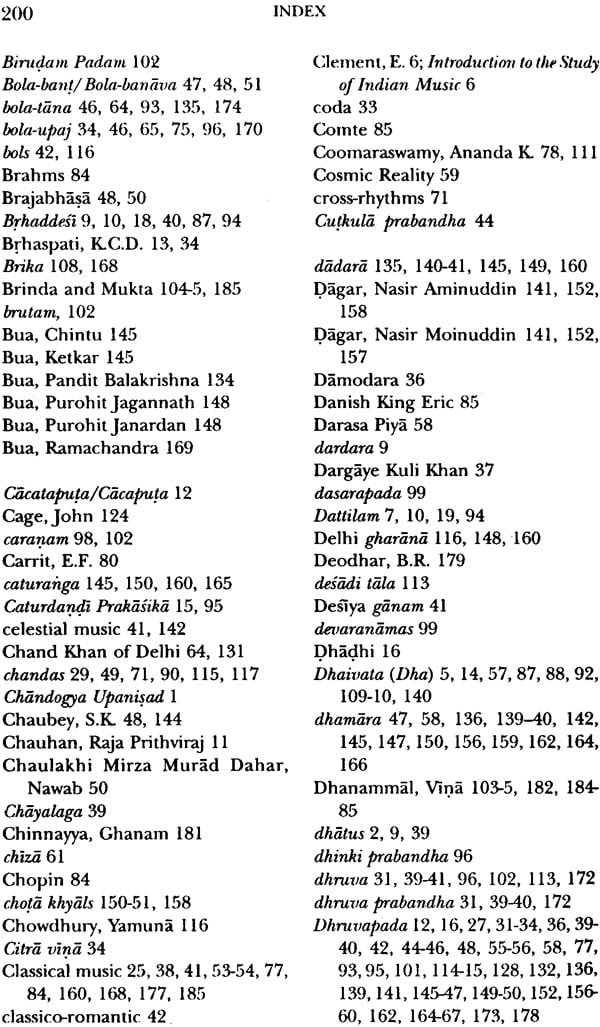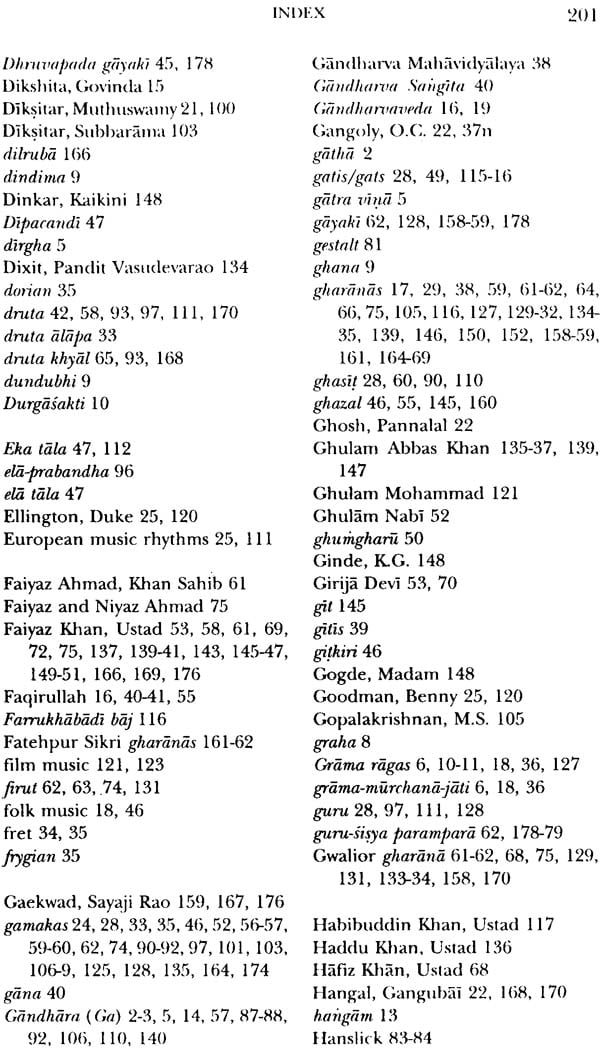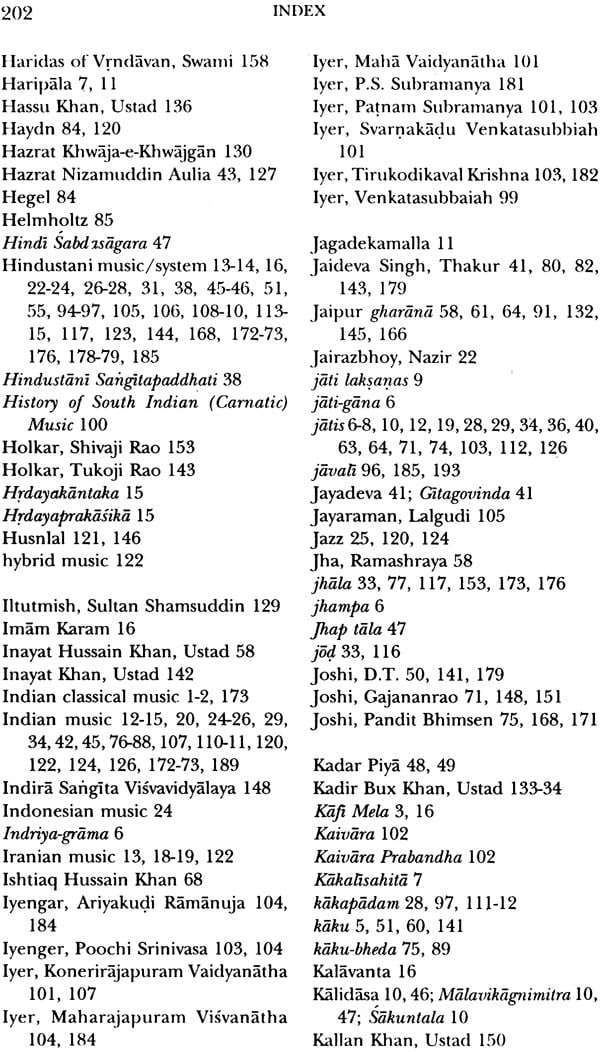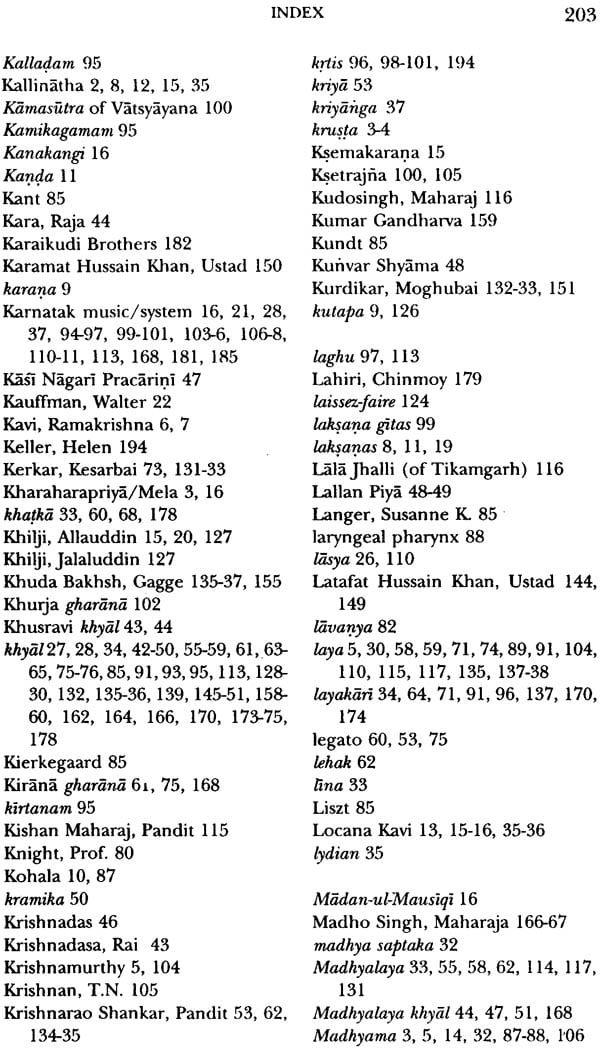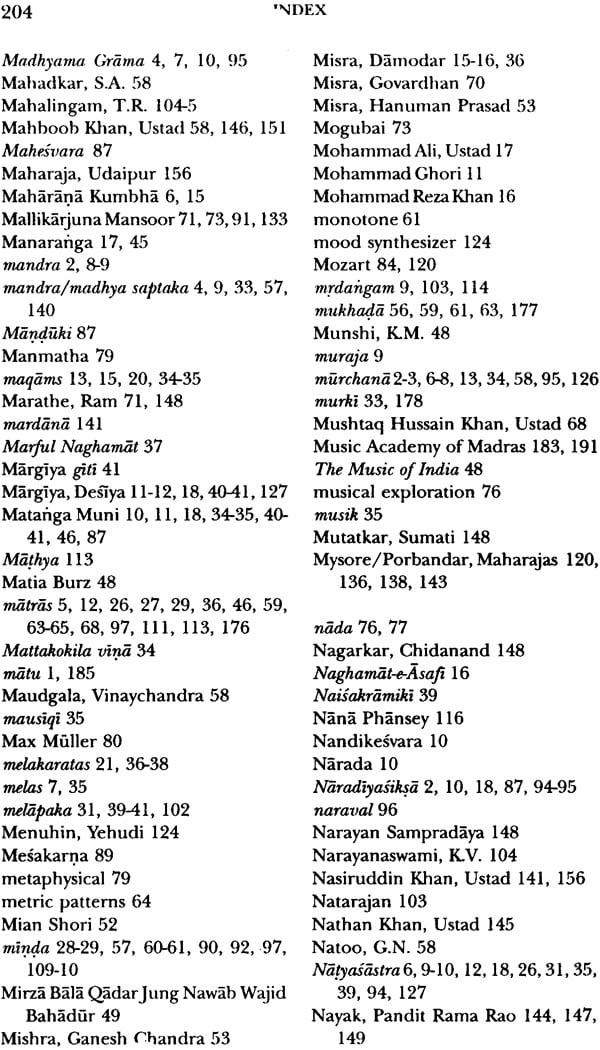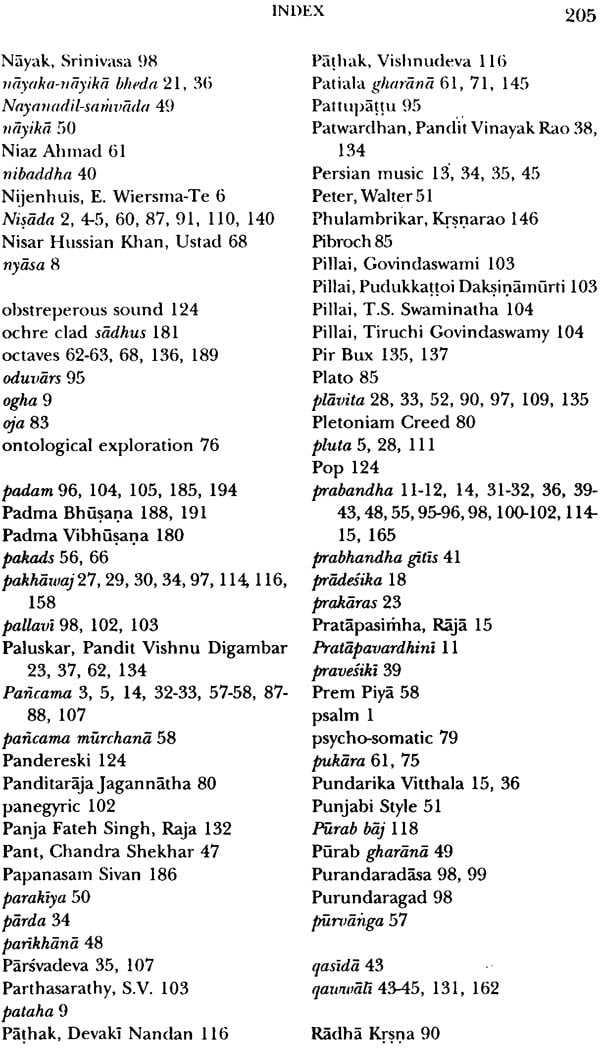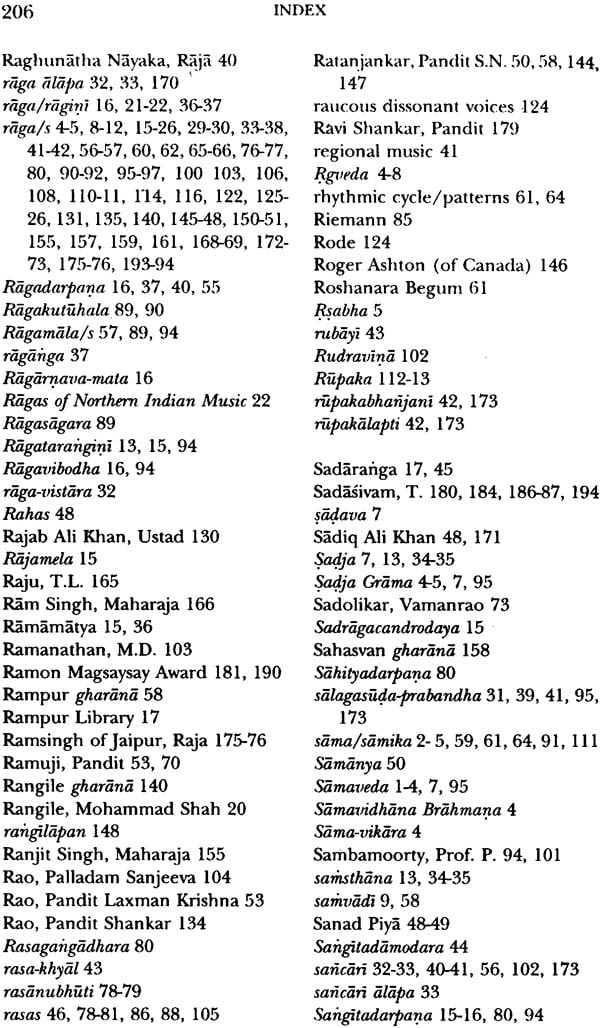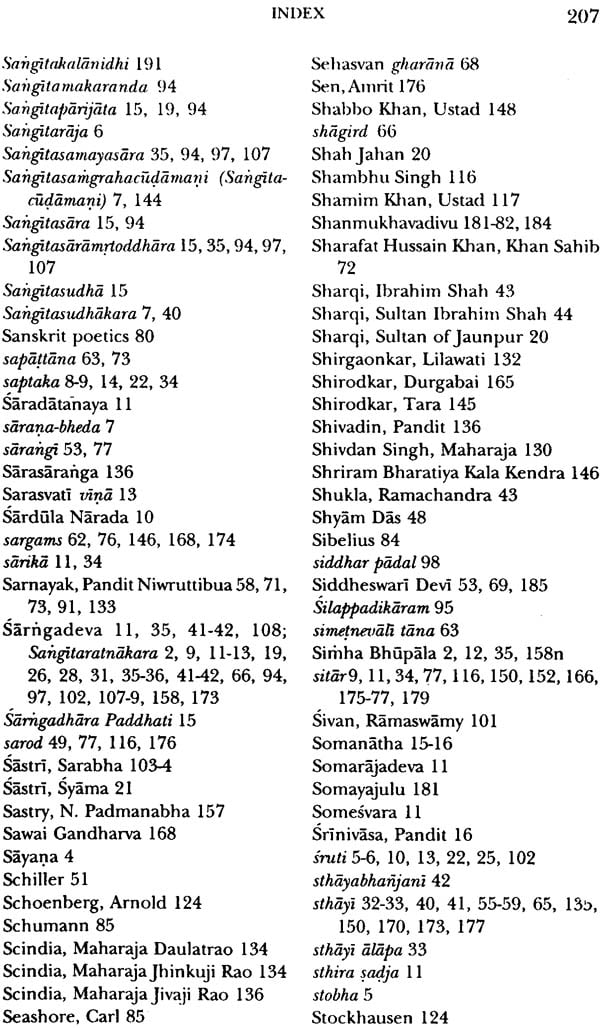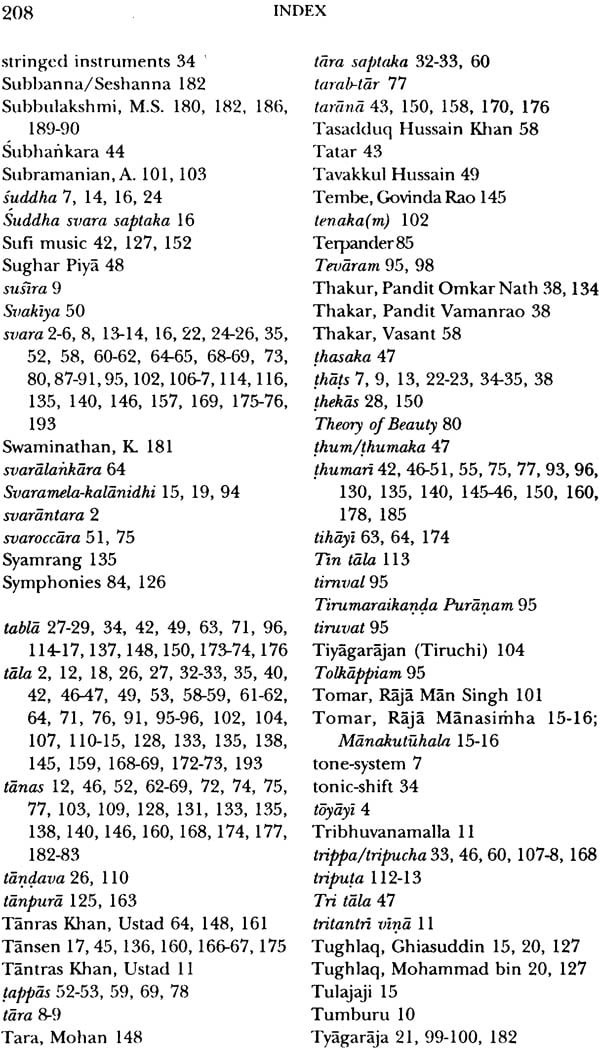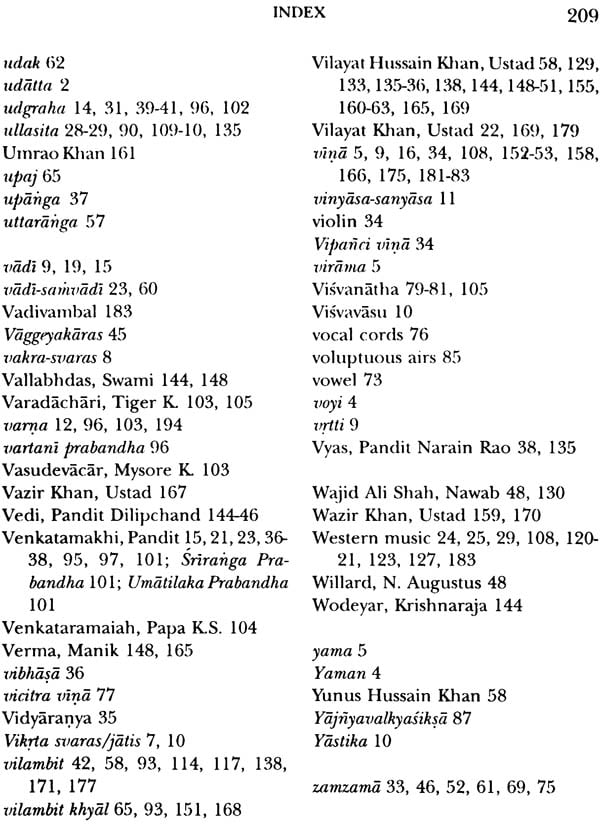
The Musical Heritage Of India
Book Specification
| Item Code: | IDD898 |
| Author: | M.R. Gautam |
| Publisher: | MUNSHIRAM MANOHARLAL PUBLISHERS PVT LTD |
| Language: | English |
| Edition: | 2019 |
| ISBN: | 8121509343 |
| Pages: | 222 (Color Illus: 8, B & W Illus: 43) |
| Cover: | Hardcover |
| Other Details | 8.8" X 5.8" |
| Weight | 450 gm |
Book Description
About the Book
The Musical Heritage of India attempts as an authentic presentation of Indian music in various aspects. In books on Indian music, especially Hindustani music with their forms, scale and raga etc., have been chosen as a particular topic and those books delineated only on them either a little fancifully or a little too literally. But this book gives not only the musicological background but also the predominantly musical content involved in the forms, aesthetics, gharanas and their styles.
This book is an epitome of the origin and evolution of Indian music from Vedic to modern film music with special reference to Hindustani music. There are separate chapters dealing with Karnatak music, the dhruvapada, the Khayal, the thumari, and the tappa; Western music and its influence on Indian film music.
One specially significant feature is the chapter of khyal the current classical form wherin the author has delved elaborately on the various step of development of the khyal gayaki with example in notation. The enumeration of the different varieties of Tanas with copious illustrations and also the actual way they ought to be articulated and accented would be very helpful to the practical student.
Another noteworthy addition in this edition is a chapter on Bharat Ratna Srimati M.S. Subbulakshmi, the unsurpassed legend of Karanatak music. Who seek to understand Indian music seriously, it history, ethos and its artistic tradition.
About the Author
Dr. M.R. Gautam is an eminent performing musician and a musicologist. He has an extremely versatile training under several great masters I different forms of classical and light classical music. In the field of music he obtained two doctorates (D. Mus. And Ph.D.) under the supervision of Prof. Thaku Jaideva Singh. Dr. Gautam was first Producer-music in the All India Radio, then became the Professor and Head of the Department of the Vocal Music, Banaras Hindu University and later, Vice-chancellor, Indira Kala Sanita University, Khairagarh, M.P. His other published work is Evolution of Raga and Tala in Indian Music (1993).
MUSIC has two important aspects-s-its theoretical and scientific background and its practical presentation. Some excel in the former, others in the latter. Prof. M.R Gautam has the rare combination of both the theoretical knowledge and the practical performance of this great art. Besides he has learnt both Hindustani and Karnatak music. Whatever he writes has the sanction of practical experience.
He has written a number of essays in this book on Indian music. Some of these throw light on ancient and mediaeval Indian music; some give a vivid description of the important forms of musical composition and some elucidate the principles of the aesthetics of music.
A chapter on the style of khyal singing, practical illustration of its elaboration and the variety of tanas it uses will be found to be of great interest by both theoreticians and practical performers. An essay on the gharanas of music gives an insight into the intricacies of the aesthetic norms of the various maestros of this art. Another chapter gives a comparative study of Hindustani and Karnatak music.
Altogether this book will be found to be of considerable interest both by the serious student of music and the lay reader.
WHY a book on Music? Music is meant to be listened to and enjoyed, not to be read or thought about, some of my music-loving friends told me. They may be right in a way, for music is an art, the fantastic, sophisticated, pleasing art of sound. It is a performing art, to be learnt practically from a guru. But there is another aspect of the art, made up of its his- tory, its norms, its forms and formal rules, its styles and, together with these, its ethnic and social implications. The study of the inter-relationships and development of all these would certainly improve one's understanding and appreciation of the art. It would put the art in its proper perspective and would equip the practising musician with a deeper knowledge of what particular kriya (operation) he or she is doing. For instance, an accom- plished singer who is not conversant with the nomenclature of the various gamakas and their specific definitions may sing some of them without knowing which particular gamaka or which type of tiina he is actually singing. The basic difference between a conscious and a non-conscious artiste is this comprehension of the various kriyas. A few hundred years ago, every musician was obliged to study the noumena and phenomena of the various aspects of music. Even now, musicians of South India (of Karnatak music) are better versed in the sastras than their counterparts in the North. This is not in any way mitigating the high calibre of performance of the Hindustani musicians, but the general ignorance and consequent disregard in the North to the study of the• structure and significance of the different practical aspects of music have resulted in an unbridled arbitrary essaying in ragas and compositions, sacrificing both form and substance.
The present book was not initially motivated by the thoughts just expressed. It came purely as an accident. In May 1972 I had given an illustrated talk on ''The History of Indian Music" at the India International Centre, New Delhi, under the auspices of 'Saptasur', a music club run by Mrs. Dipali Nag, the well-known musician and genuine friend of all artistes. She liked the talk so much that she suggested that I put it down on paper as an article. When I began doing this, my niece and her husband, Sunanda and Padmakar Patwardhan, put pressure on me to write a book on music and provided me with stenographers and other facilities. Thus this book came into being.
I have, in the course of my career, gone.through most of the books currently available on Indian music, both in English and Hindi. I felt that there was scope for certain topics to be dealt with in greater detail. For instance, in the first chapter I have tried to focus on the solid contribution of Samaveda to Indian classical music and traced the evolution of our music through the ancient texts in Sanskrit, and the various musical forms like prabandhas, dhruvapadas, khyals, etc. The important ancient works on Indian music like the Natyasastra, the Brhaddesi, the Sangita- ratnakara, the Sangitasamayasara have been referred to and quoted wherever necessary.
A separate chapter has been devoted to khyal, the current principal classical form of Hindustani music in the discussion on khyal gayaki, its various steps of systematic elaboration have been described in detail. The sixteen different types of tanas, their definitions, and the technique of singing them, including illustrations in sargam (svara patterns), have' also been given. Karnatak music, and a comparative study of Hindustani and Karnatak music have been dealt with in separate chapters. Aesthetics, on which many books have been written, mainly relating to poetics and drama, has a different application and different limitations where music is concerned. The extent to which the various rasas used in drama may be satisfactorily employed in music has been analysed.
Western music has also had its inevitable impact on Indian music, essentially on modern light music. How far it has been utilised, creatively or otherwise, has been discussed.
A separate chapter on gharanas has been added, highlight- ing their good as well as had points. This may he of special interest today, when gharanas are fast disappearing. The chapter on current trends in Hindustani music, coming at the end, was considered necessary to round off the discussion.
Iwish to make it very clear, in all humility, that whatever has been expressed is essentially the understanding of an individual who has given the better part of his life to musical learning. Many may not agree with what has been stated regarding several aspects of our music. That would he only natural. I have tried, for my part, to concentrate on the corpus of Hindustani music and not on individual persons.
I am deeply indebted to my guruji, Thakur Jaideva Singh, for so graciously agreeing to write the Foreword to this book. What- ever I know of musicology, I owe to him entirely.
My thanks are due to Prof. Ananda Krishna, Professor of History of Arts and Joint Director, Bharat Kala Bhavan, and to Shri O.P. Tandon, Deputy Registrar (Development) and Deputy Director, Bharat Kala Bhavan, for their kind permission to use the blocks of the Ragamala paintings from their collection.
I also owe a debt of gratitude to the Sangeet Natak Akademi for their kind cooperation in making available the photographs of several musicians.
My good friend Madhusudan Dhaky, the art historian and musicologist, was not a little responsible for inspiring me to complete this book.
Lastly, I wish to state that this book is meant for the genuine student of music-the vidyarthi-and not for those who may wish to lounge in their gardens and browse over it as a post- prandial pastime. This is a serious book
ThEenthusiastic and ardent appreciation which my book received, the brisk sale of it and requests from both musicians and connoisseurs of music encouraged me to bring out this second edition.
In the previous edition there was a serious error of omission. In the chapter on Karnatak music, I had through some uncanny oversight failed to include the all time great Karnatak musician Dr. (Mrs.) M.S. Subbulakshmi. That error has been rectified in this edition. A separate chapter titled 'The living legend of Karnatak Music" has been added. Apart from this, the book has been revised and printer's devils wherever detected corrected. And I am immensely grateful to Shri. T. Sadasivam, husband ofSmt. M.S. Subbulakshmi for being gracious enough to furnish me with all the photographs of his wife for use in my this edition without which the chapter on her would have lacked impact. I am most grateful to Shri Sadasivam for this cooperation and kindness.
I hope this edition also will receive the same stimulating response from the serious students and lovers of music.
| Illustrations | vii | |
| Foreword | ix | |
| Preface to the Second Edition | x | |
| Preface to the First Edition | xi | |
| 1. | Vedic Music - Its Contribution | 1 |
| 2. | Raga and Tala | 18 |
| 3. | Forms of Musical Compositions of North India | 31 |
| 4. | Khyal, the Principal Classical Form | 55 |
| 5. | Aesthetics | 78 |
| 6. | Karnatak Music | 94 |
| 7. | A Short Comparative study of Hindustani and Karnatak Music Styles | 106 |
| 8. | Impact of Western Music on our Film Music | 119 |
| 9. | Gharanas of Hindustani Music | 127 |
| 10. | Current Trends | 172 |
| 11. | M.S. Subbulakshmi: The Living Legend of Karnatak Music | 180 |
| Bibliography | 196 | |
| Index | 198 |
